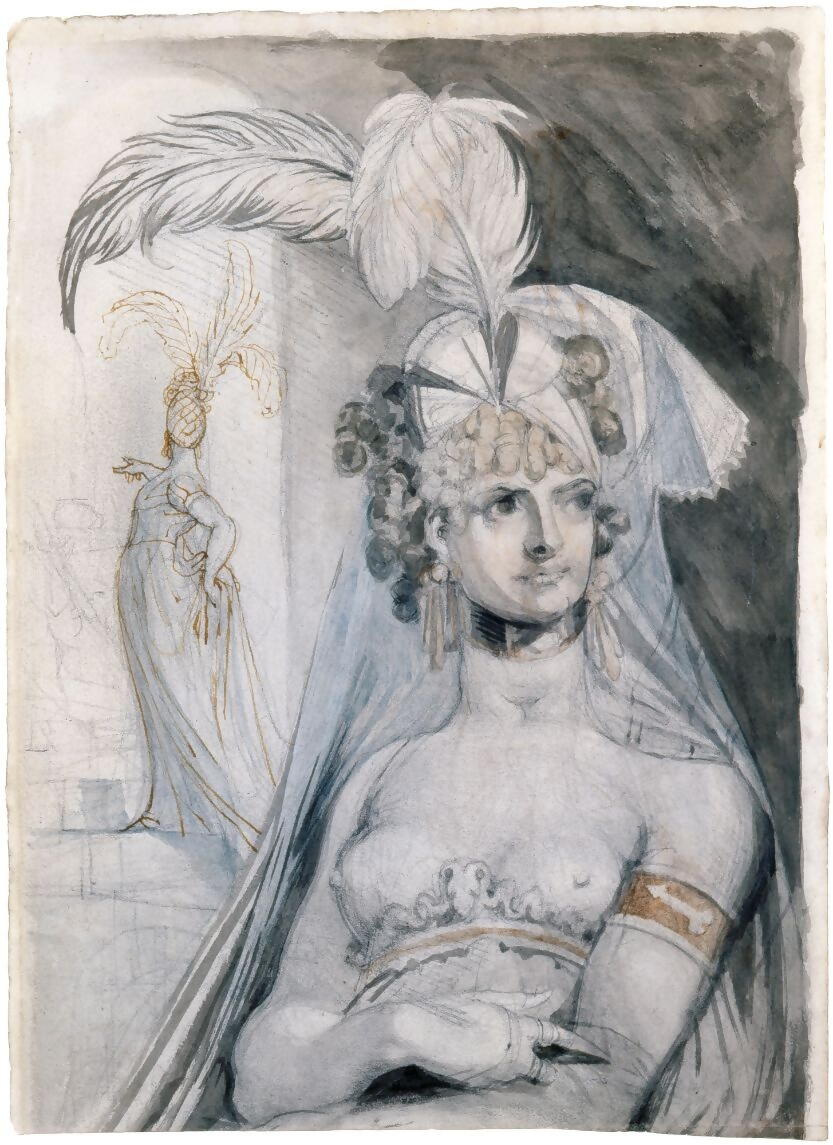
Henry Fuseli’s drawings of 1890s women delight, intrigue and repulse Alexander Adams.
Above: Sophia Fuseli in broad-brimmed Hat, seated on a sofa, c.1795 by Henry Fuseli
People talk about the increased moralism of the Victorian age. What often goes unsaid is that there must have been – and was – quite a lot of decadence and debauchery in the preceding era: the Georgian period. If you want evidence of that depravity, there is no better place to go this winter than the Courtauld Institute, London. Swiss artist Henry Fuseli (1741-1825) spent most of his professional life in London. A figure of controversy – acclaimed a genius, denounced as a madman, dismissed as a technical incompetent – Fuseli was a prominent artist in the Romantic movement.
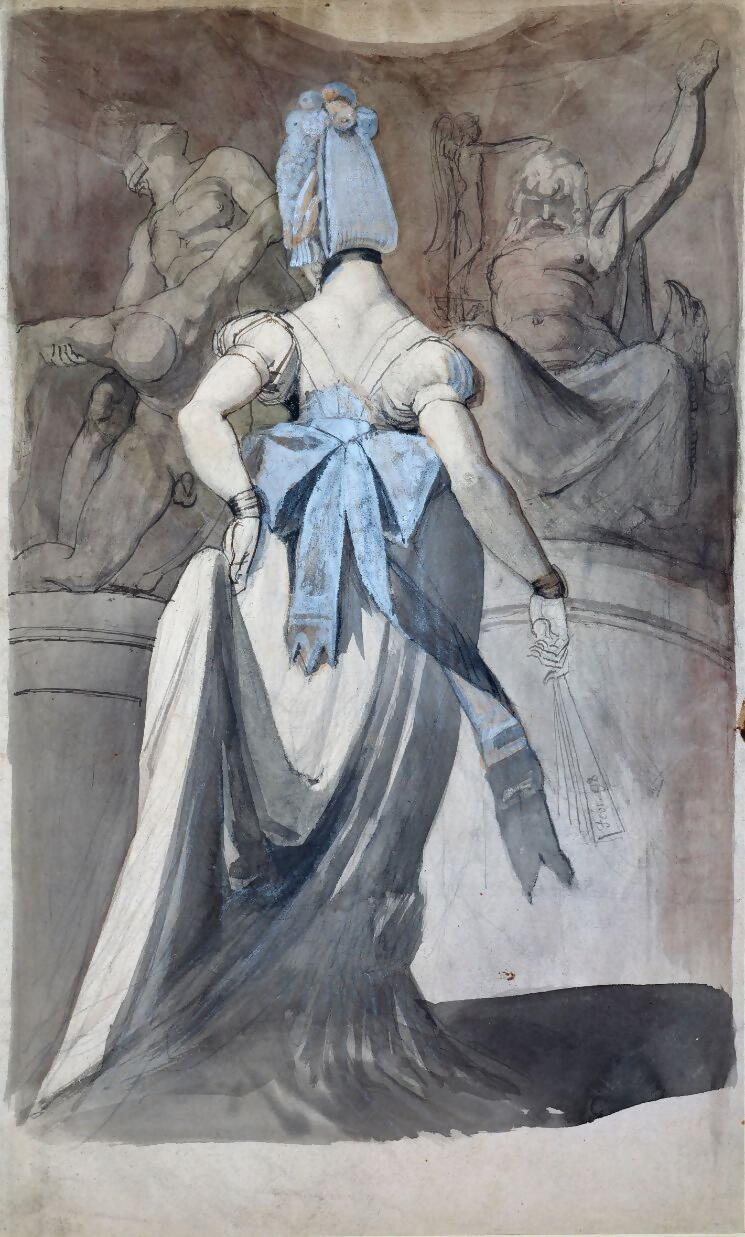
A Woman in a Sculpture Gallery, 1798 by Henry Fuseli
Elegant attire, unspeakable atrocities
Fuseli and the Modern Woman: Fashion, Fantasy, Fetishism (ends 8 January 2023) is the first exhibition of Fuseli’s drawings of women, specifically the modern Georgian-period woman. Fuseli’s women can be depraved but are always elegantly attired. His witches are exquisitely costumed as they participate in unspeakable atrocities that Fuseli never reveals.
At the heart of the exhibition is Sophia Rawlins (1762/3-1832), the artist’s English wife. When they met, she was already an artist’s model, a shady profession at this time. When they married in 1788, she was 25; he was 47. She continued to pose for him, and it seems they developed a collaborative relationship, with her spending hours on her appearance, at least partly to provide a vision of artificial female beauty for her husband to turn into art.
Some conventional portraits include Sofia, two friends, and a Spanish diplomat’s daughter in London. Sophia wears a broad-brimmed hat with a mop of loose fabric on top, inspired by Montgolfier’s first balloon flights. There is a startling profile portrait of Anna Magdalena Schweizer, who has a giant beehive hairdo and an enlarged eye anime.
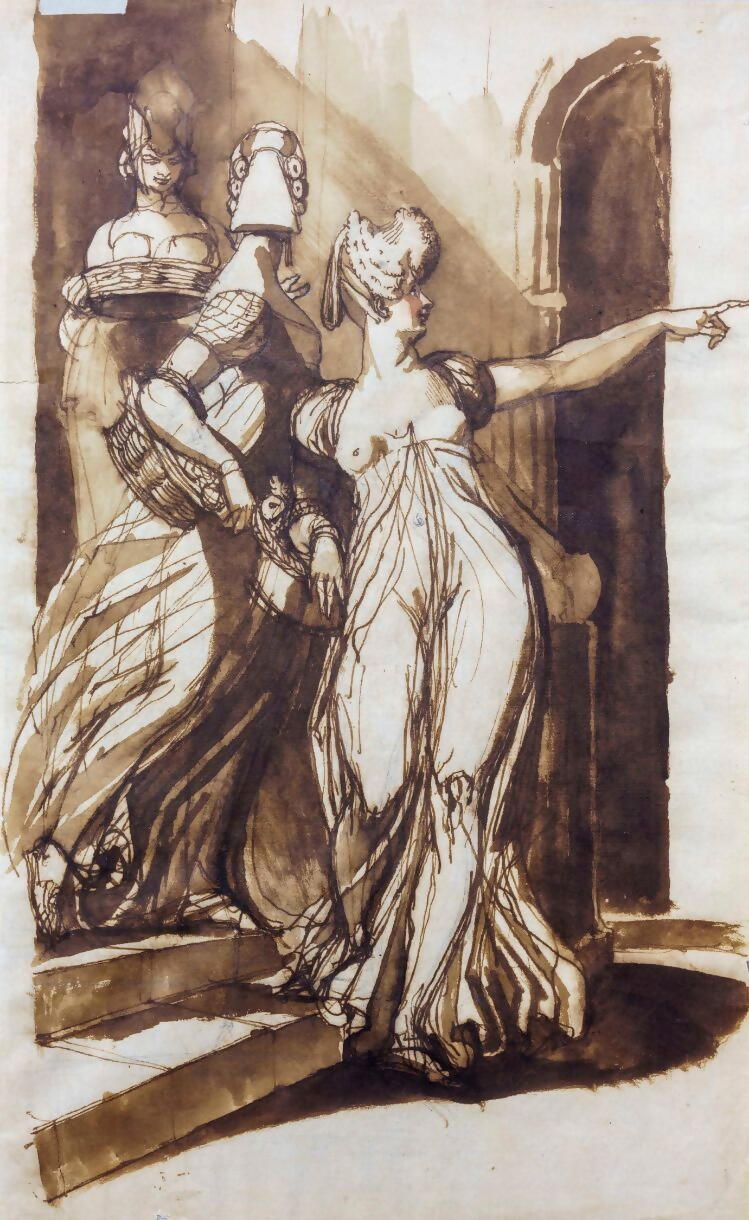
Three Women with Baskets, Descending a Staircase, c.1798-1800 by Henry Fuseli

Half-length figure of a Courtesan with Feathered Head-dress, c.1800-10 by Henry Fuseli
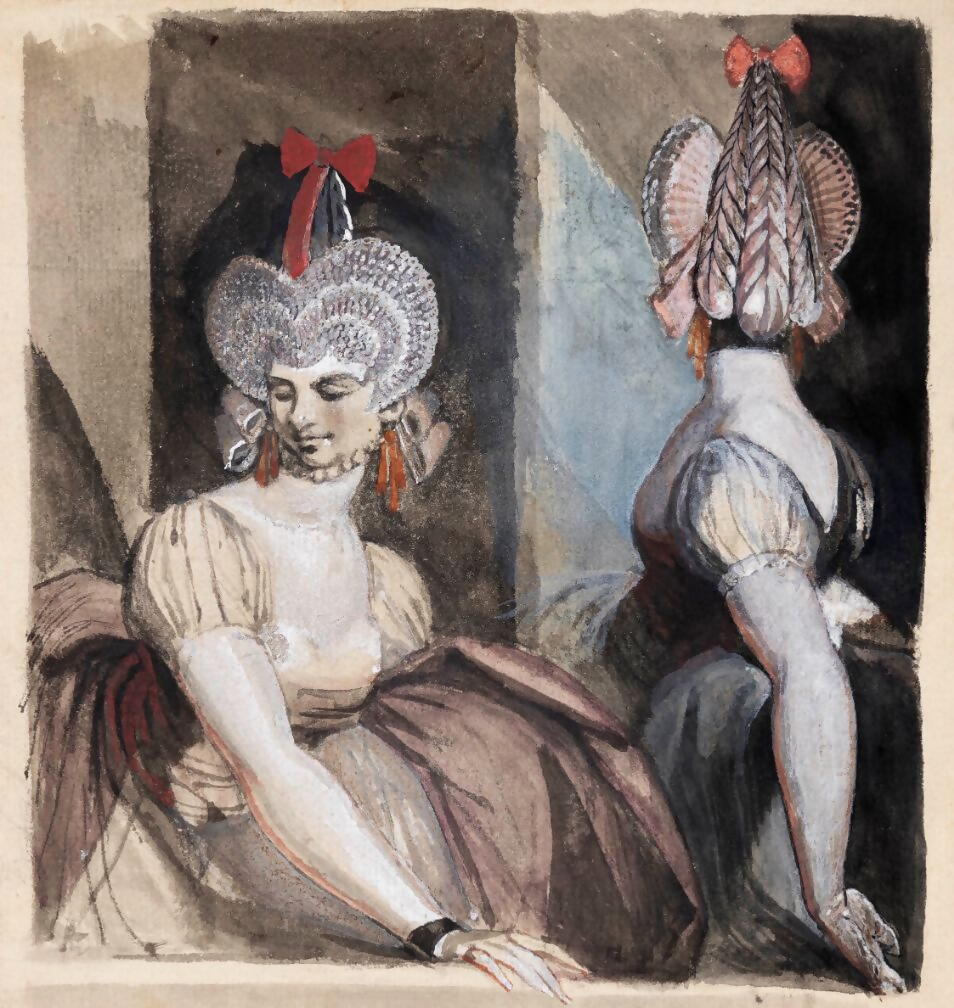
Two Courtesans in a Theatre Box, with fantastic hairstyles, c.1790-92 by Henry Fuseli
Fuseli routinely stylised clothing and bodies. His women have tiny feet clad in slippers that taper like pen nibs. Most of the portraits and much of the dressing style look lifelike, but the anatomy (never the notoriously under-trained Fuseli’s strong point) looks unconvincing. Sophia has the forearms of a fishwife (or lightweight boxer), which are sheathed in long gloves. Her face, powdered in white, with red lipstick and heavy curls, will remind visitors of the character Dorothy (the vamp club singer) from the film Blue Velvet.
Hair fetish
The hairdos in these drawings are extraordinarily detailed and complicated. So much so that they must have required extensive planning and preparation, most likely including the participation of a maid and specialist equipment such as heating tongs, crimping irons, slips of paper, combs, pins, clips, cushions, beads, lace, ribbons and powder. The amount of time needed to produce such elaborate spectacles may have needed many hours (some suggest even days). This gimmick is often complemented by dresses that reveal decolletage, bare shoulders and arms, heightening artifice by juxtaposing it with glimpses of nakedness.
Hair seems to have been a fetish for Fuseli. Even though high-society women of the late Georgian period spent a lot of time, attention and money dressing their hair, Fuseli’s women’s hair is so exaggerated it must be fake. Although Fuseli saw the hair obsession of women as a weakness and indulgence, it was one he shared. He drew a woman leaning over a well, offering a plait to a person below. One hand vainly reaches out for rescue while the lady toys with a sufferer the way a woman teases a pet.
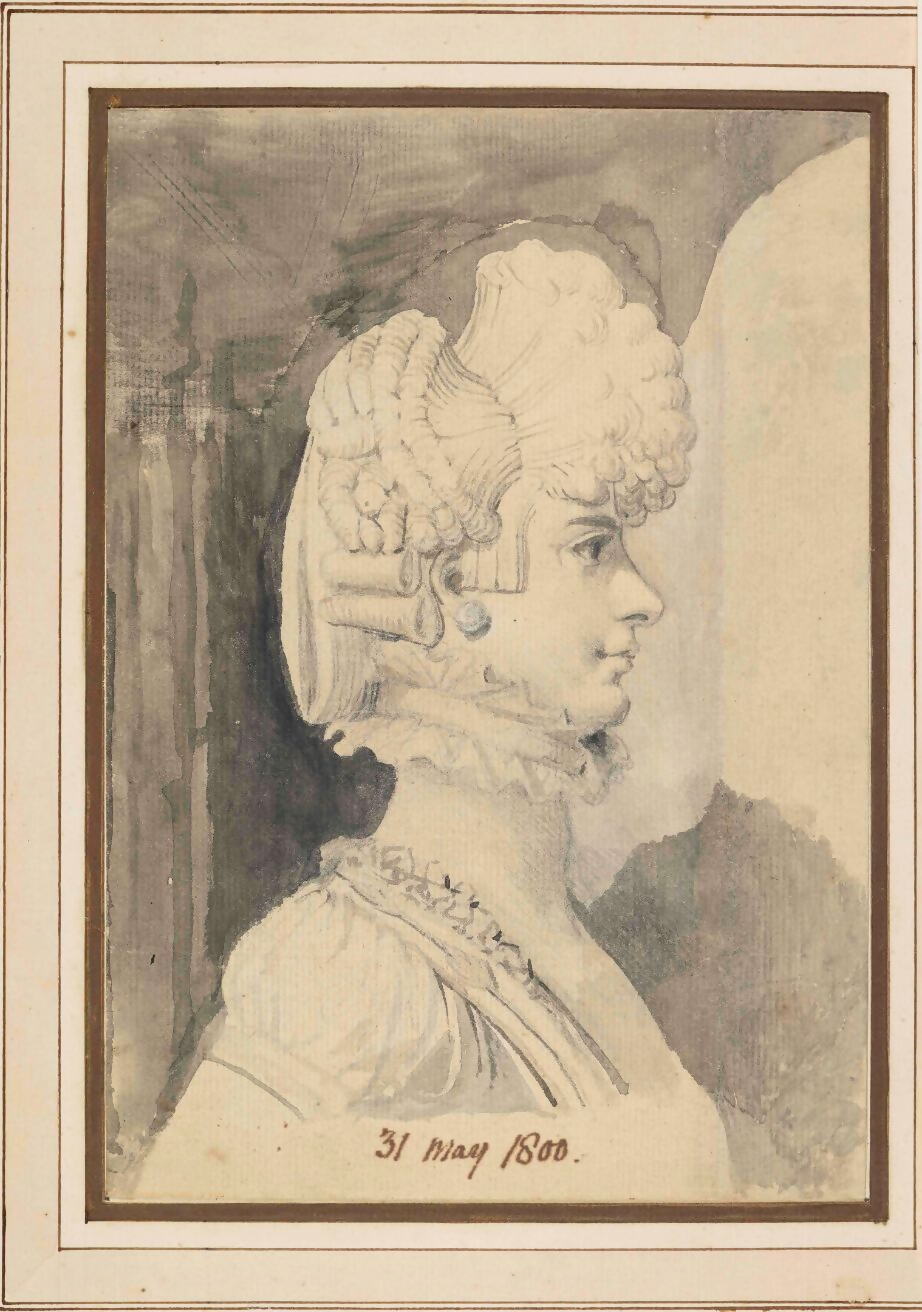
Sophia Fuseli in Profile, facing right, 1800 by Henry Fuseli
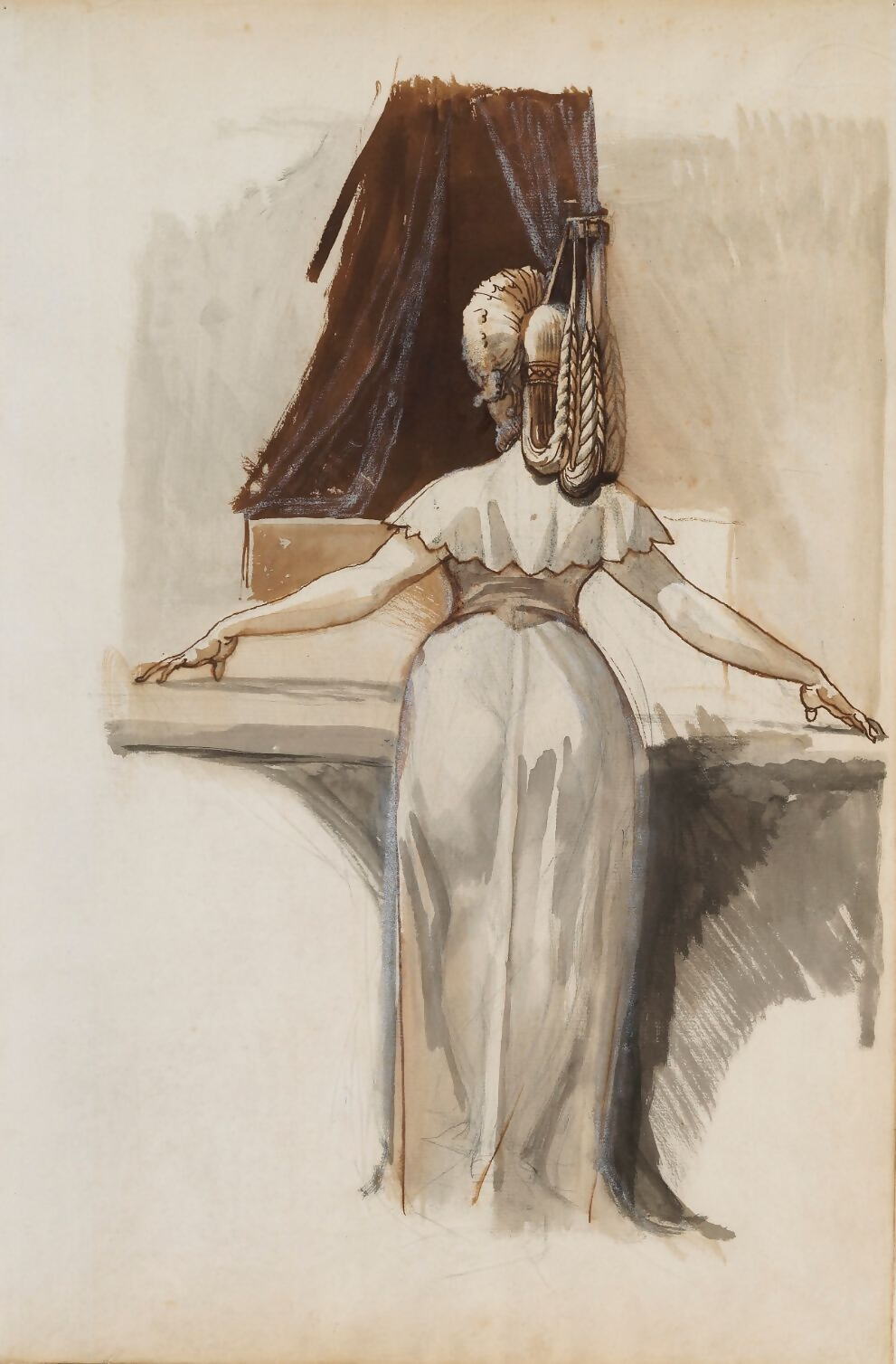
A Woman Standing at a Dressing Table or Spinet, c.1790-92 by Henry Fuseli
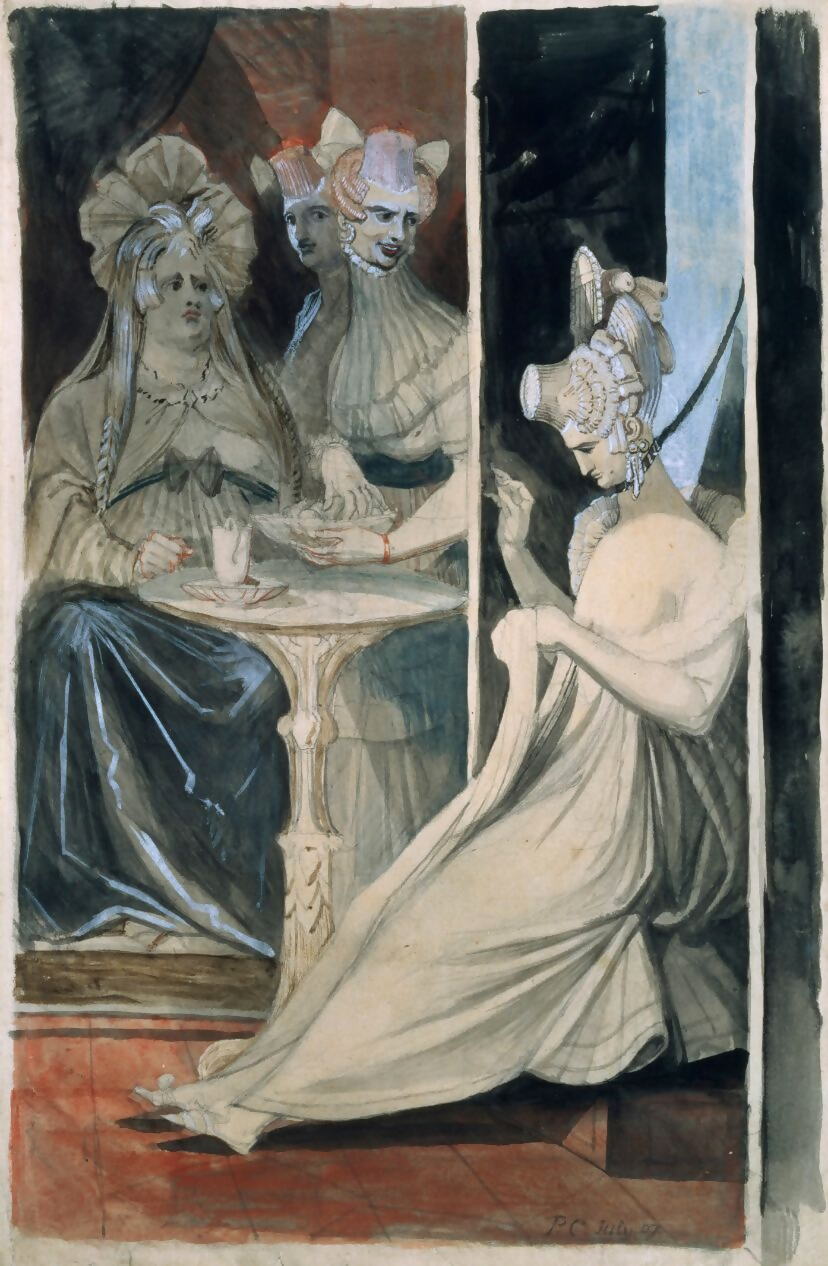
The Debutante, 1807 by Henry Fuseli
The excellent catalogue (Paul Holberton/Courtauld Institute, £30) details what art, prints, satirical illustrations and journals Fuseli may have been influenced by. The log is enlightening, free of jargon, and explains Fuseli traced many figures, using both sides of a sheet of paper and sometimes copying across figures between multiple sheets.
Witches in haute couture
There is definite unease and perverse attraction to pictures of women doing things that might not be improper but illicit. There are drawings of women handling instruments that could have been for making clothing, cosmetic work or surgery. The ambiguity seems deliberate. Some are more sinister. In one drawing, an elegantly dressed woman leans over the restrained body of a child, some tool or weapon in one hand. The witch was a frequent figure of fascination during the Romantic movement of 1790-1820.
In other drawings, Fuseli flirts with the peculiar and perverse. He shows us, courtesans with bared breasts and pubic hair, displaying (in art) the latter of which was essentially forbidden in polite society. In a drawing of a sadomasochistic character, a woman has been tied (by women) to a wall by a collar and lead. Yet, it is not unalloyed misogyny, as men are just as often seen as objects and passive in the face of the guiles of women.
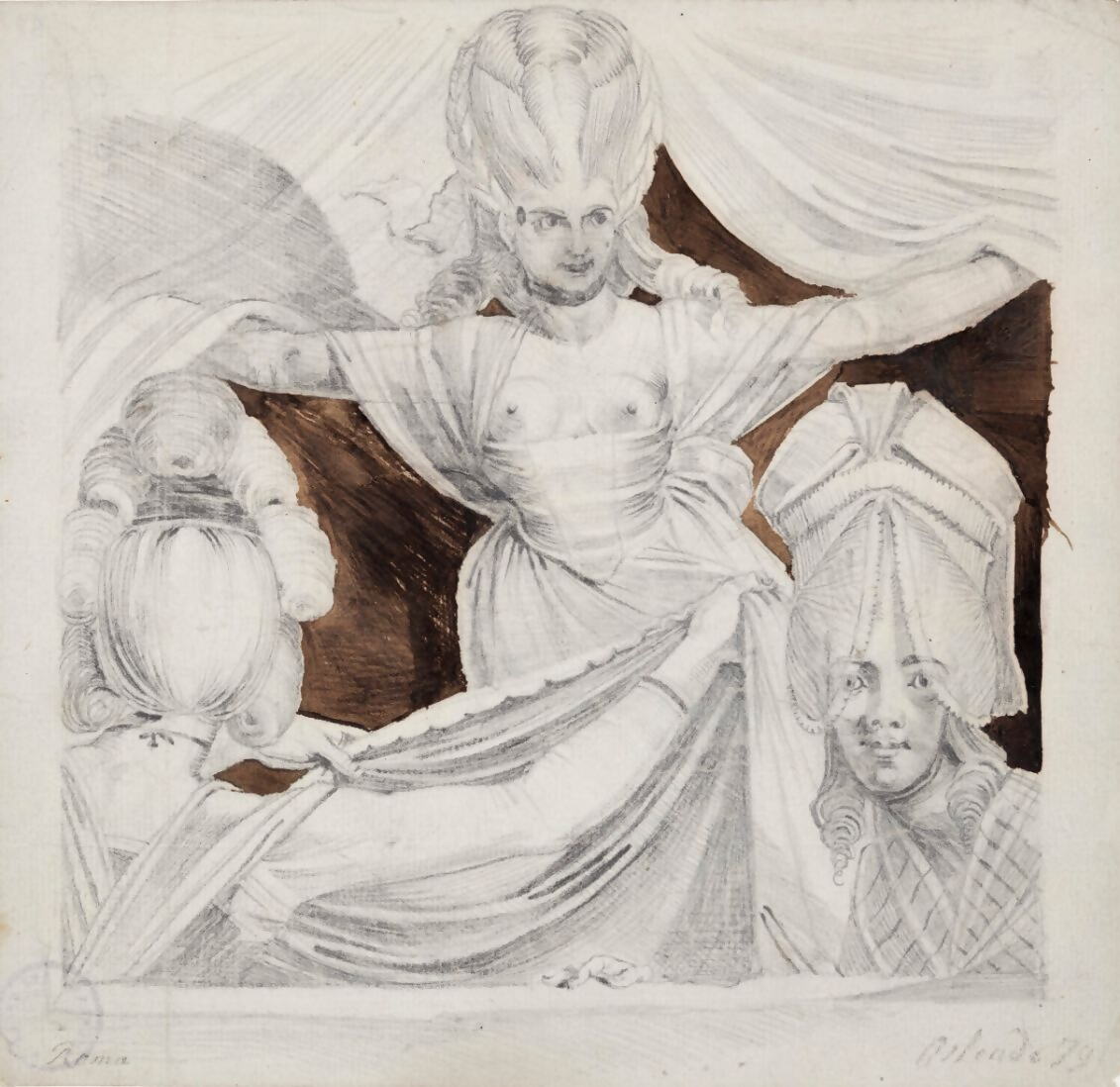
Three Women at a Curtained Window, 1779 by Henry Fuseli

Allegory of Vanity, 1811 by Henry Fuseli
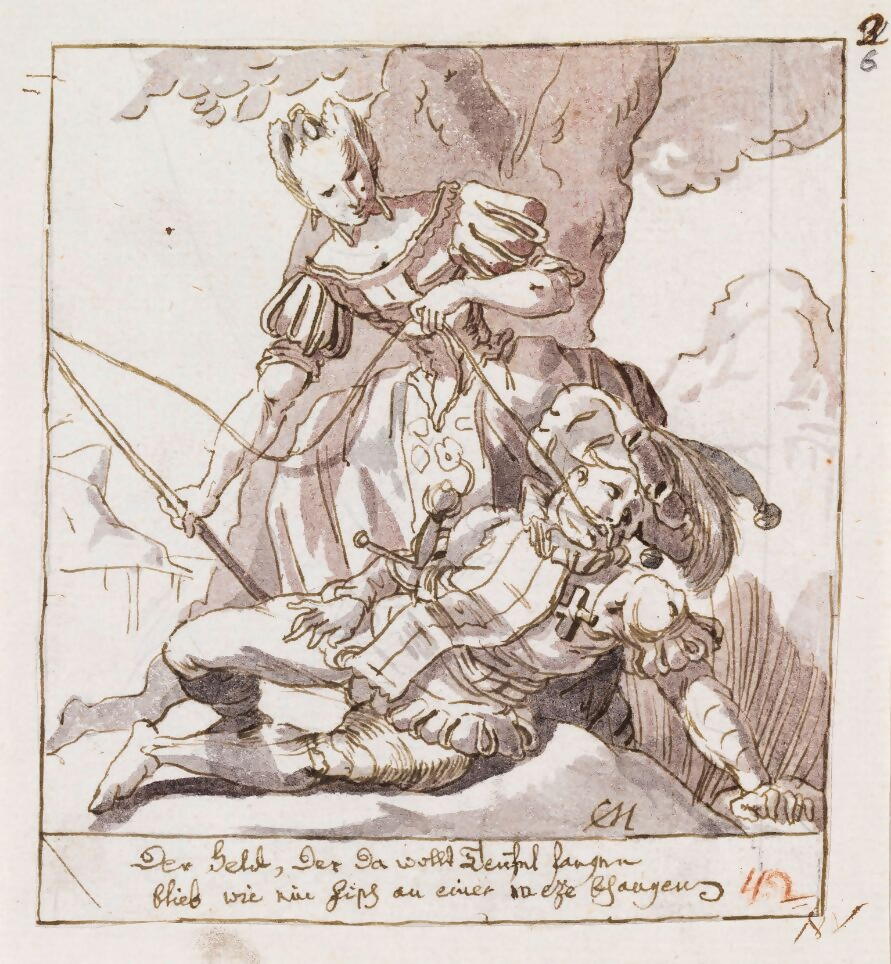
Fool on the End of a Prostitute’s Rope, c.1757-59 by Henry Fuseli
Who were these drawings for? Fuseli didn’t seem to know. On some occasions, he claimed that these were just his way of recording fantasies. Another time, Fuseli floated the idea of a group of educated gentlemen paying him £20 per year in return for drawings. Fuseli could never exhibit his erotic fantasies publicly. He wrote inscriptions in Greek to dignify the pictures with the veneer of learned classical sources, giving gentleman collectors the excuse of patronising an artist engaging with the ancients rather than indulging in erotic reveries.
This gathering of drawings has the air of a private connoisseur’s most secret album opened to inspection or perhaps the exposure of a tome of forbidden arcana. The odours of ladies’ perfume and witches’ sulphur emanate from every battered sheet in this memorable exhibition.


